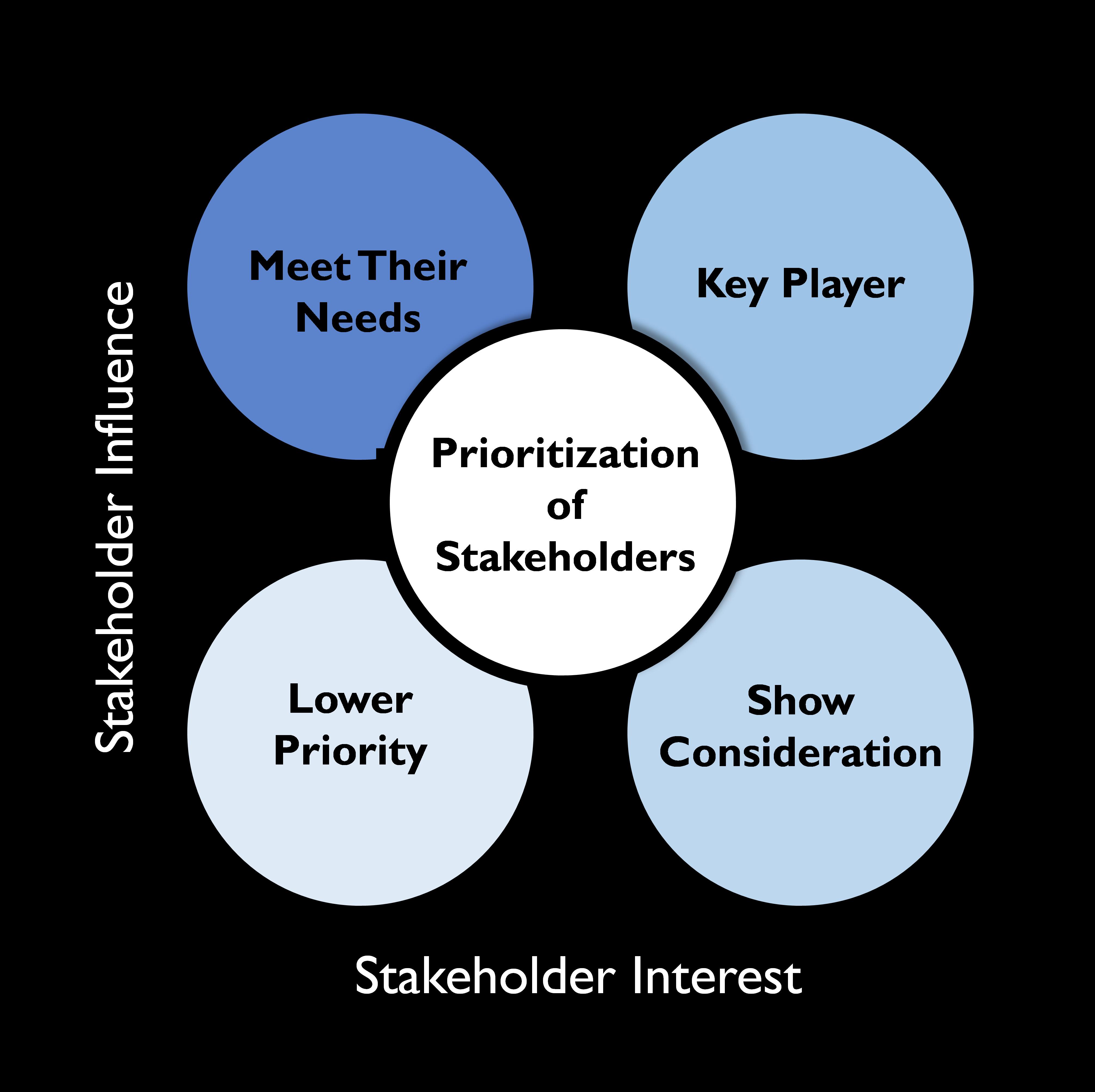Data Management
“The beginning of wisdom is the definition of terms.”
“The beginning of wisdom is the definition of terms.”
This is an old revision of the document!
A stakeholder analysis is an analysis with regard to stakeholders.
Other defintion is:
An overview of all stakeholders and their interest (requirements, needs and expectations) concerning data quality.
A stakeholder rating map is a form of visualization using a quartered chart to show stakeholders in terms of interest and influence/power. See figure 1.
Interest indicates stakeholders’ likely concerns, whilst Influence indicates their ability resist your recommendation or change.


Figure 1: Two Stakeholder Rating Maps
Interested party.
Purpose of a data quality stakeholder analysis is to consider the requirements, needs and expectations of the stakeholders when managing the data quality policy, critical data elements, and data quality objectives.
Purpose of stakeholder rating map is to prioritize the interest (needs) of stakeholders considering their influence.
| Phase | Activity |
|---|---|
| Plan | • Plan the data quality stakeholder analysis • Identify the data quality stakeholders • Identify the requirements, needs and expectations of the data quality stakeholders. • Rate the influence and interest of the data quality stakeholders • Compose a Stakeholder Rating Map • Compose the data quality stakeholder analysis |
| Do | • Consider the data quality stakeholder analysis when managing the other elements of the data quality management system, e.g., data quality policy, critical data elements, and data quality objectives. |
| Check | • Review/evaluate the data quality stakeholder analysis |
| Act | • Adapt the data quality stakeholder analysis to new insights and circumstances |
| Characteristic | Requirement |
|---|---|
| Completeness of the DQ Stakeholders Analysis | Alle relevant stakeholders are mentioned in the DQ Stakeholder Analysis |
| Currency of the DQ Stakeholders Analysis | The DQ Stakeholder Analysis is up to date |
Stakeholder analysis is an element of data quality management system. Stakeholder analysis is considered while managing critical data elements, the data quality policy, and data quality objectives.
Examples of DQ Stakeholder categories are data consumers, Chief Information Officers, data owners, data stewards, staff, data suppliers. Example of a DQ Stakeholder Analysis
| Stakeholder categories | Interest (requirements, needs and expectations) of the stakeholder | Interest of the stakeholders | Influence or power of the stakeholders |
| Data users | • Data quality meet the requirements | High | High |
| Data suppliers | • Data will be accepted ‘as is’ | High | Low |
| Chief information officer | • Sufficient capacity and competency regarding DQ | Middle | High |
| Data owners | • Support from management and data stewards • Sufficient capacity | High | High |
| Data stewards | • Support from management • Sufficient tooling | Middle | Middle |
| Staff | • Adequate data quality so they can do their jobs properly | High | Low |